How to Create Hologram Videos: A Comprehensive Guide
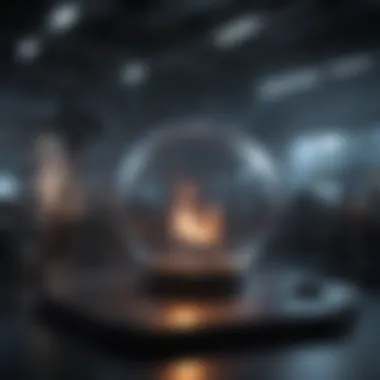
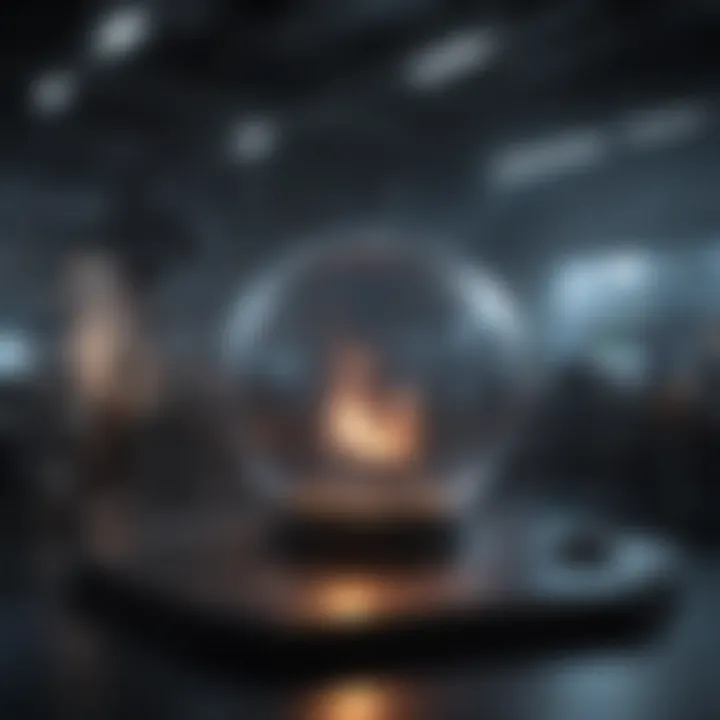
Intro
Creating hologram videos offers a unique intersection of art and technology, transforming how we convey information and engage audiences. With the emergence of advanced imaging technologies, the once elusive dream of producing three-dimensional representations has become increasingly attainable. This guide aims to unpack the essentials behind crafting hologram videos, diving into the necessary equipment, cutting-edge software, and fundamental techniques.
Overview of Research Topic
Brief Background and Context
The history of holography dates back to the 1940s when the physicist Dennis Gabor developed the concept of holograms. Initially used for scientific purposes, the technology has evolved significantly, merging with digital imaging and visual effects to form a medium that can captivate viewers in entertainment, education, and advertising. Today, producing hologram content relies heavily on accessible digital tools, making it viable for individuals and small businesses.
Importance in Current Scientific Landscape
In today’s fast-paced digital age, holography represents a frontier of innovation, capturing audience attention in unprecedented ways. As media consumption diversifies, so too does the demand for immersive experiences. Hologram videos have potential applications across fields—be it in marketing strategies, art installations, or educational demonstrations. Understanding the mechanics behind this technology is crucial for anyone looking to stay ahead of the curve.
Methodology
Research Design and Approach
To effectively create hologram videos, one needs to grasp both the technical and artistic aspects of the process. The best approach involves a combination of theoretical study and practical experimentation. This hands-on experience solidifies concepts and reveals the nuances often overlooked in purely academic discussions.
Data Collection Techniques
To stay current with trends and techniques, creators should utilize a range of resources including:
- Online Forums: Engaging with communities on platforms like reddit.com can provide insights and tips from practitioners at all skill levels.
- Tutorial Videos: Sites like YouTube feature numerous comprehensive guides to various software and hardware setups.
- Industry Conferences: Attending events will expose creators to the latest advancements and networking opportunities.
"Emerging technologies redefine our storytelling capabilities, urging us to think beyond the screen and explore immersive experiences."
The combination of these methods enriches understanding and fosters a creative mindset, crucial for producing captivating hologram videos.
Prelude to Hologram Videos
Hologram videos are quickly becoming a fascinating topic in visual media, drawing attention for their unique blend of technology and artistry. To grasp the essence of creating these stunning visuals, we must first understand what holography entails and how it has evolved over time. In this section, we will explore what makes hologram videos so significant, the technological advancements that have paved the way for their creation, and the myriad applications they offer across various fields.
Defining Holography
Holography is the science of creating three-dimensional images through the interference of light beams from a laser or another coherent light source. Unlike traditional photography, which captures only the intensity of light, holography records both the intensity and the phase of light waves. This results in an image that can change based on the viewer’s angle, providing a much more immersive experience. By understanding this definition, we can appreciate why holography captures the imagination—it's not just about showing things; it's about seeing them in a way that mimics real life.
The Evolution of Holographic Technology
From its inception in the mid-20th century, holography has undergone significant transformations. Initially, it was largely confined to laboratories, requiring expensive equipment and expert knowledge. However, as technology evolved, we witnessed a gradual democratization of holographic techniques. Now, high-quality holograms can be created using smaller, more affordable devices. Companies like Microsoft and Google are at the forefront, working to integrate holography into consumer-ready applications. This shift underscores the increasing relevance of holograms in everyday life. The past few decades have transformed holography from an experimental technique to a tool for creativity and communication across various sectors.
Applications of Hologram Videos
Hologram videos possess a wide spectrum of applications, showing potential in multiple fields:
Entertainment
Holography’s contribution to entertainment is monumental. Whether it’s concerts featuring holograms of deceased artists or innovative advertising strategies, it reshapes how audiences engage with content. The engaging nature of holograms stands out, as their 3D images can captivate viewers more effectively than standard screens. Yet, this technology also comes with challenges, such as the need for specialized viewing equipment and the potential for viewer fatigue. Overall, its novelty makes it a sought-after choice in the entertainment industry.
Education
In the educational arena, holograms provide an interactive learning experience. Imagine medical students studying anatomy through 3D holograms, allowing them to visualize structures in real-time. This dynamic approach can significantly boost retention and comprehension. One drawback, however, could be the cost of implementing such technology in classrooms, which may not be feasible for all institutions. Nonetheless, the immersive aspect of holographic education has the potential to revolutionize learning methodologies, making it an exciting option for educators and students alike.
Medical Imaging
Medical imaging is another realm where holography shines. It allows healthcare professionals to visualize complex structures like organs in three dimensions, leading to improved diagnostics and surgical planning. The critical aspect of holographic imaging is its ability to provide detailed, spatial representations of internal features that can be manipulated for better assessments. However, integrating this technology into everyday medical practice can pose significant cost implications and require extensive training. Despite these challenges, the advantages of utilizing holograms in medicine are too significant to overlook, presenting an opportunity for further exploration and development in the field.
"Holography moves beyond just seeing—it’s about experiencing through dimensions that weren’t previously accessible."
In summary, the introduction to hologram videos lays a solid foundation for understanding their potential and significance in various applications. From entertainment to education and medical imaging, the advantages and challenges they present are essential to consider as we navigate the evolving landscape of holographic technology.
Understanding the Science Behind Holography
Holography is not just a fancy term thrown around by sci-fi enthusiasts; it’s a sophisticated science that merges art and technology. Understanding the principles of holography gives creators insight into how to make stunning visuals that can practically jump out of the screen. Grasping the science behind it helps demystify the creation process, providing a solid foundation for innovation in video production. From understanding how light behaves to mastering the delicate balance of interference patterns, knowing these elements is crucial.
The Principles of Light and Interference
Light is more than just what makes our world visible — it’s the very essence of holography. To grasp how holograms function, one needs to appreciate the principles of light, particularly wave behavior. When light travels, it moves in waves, and when different light waves overlap, they create an interference pattern. This pattern is the heart of any holographic image.
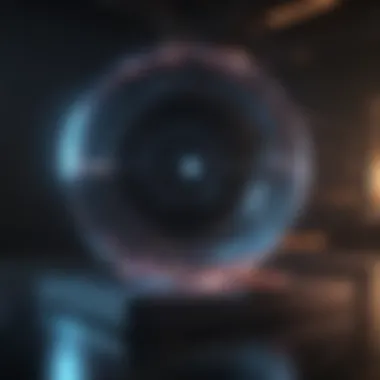
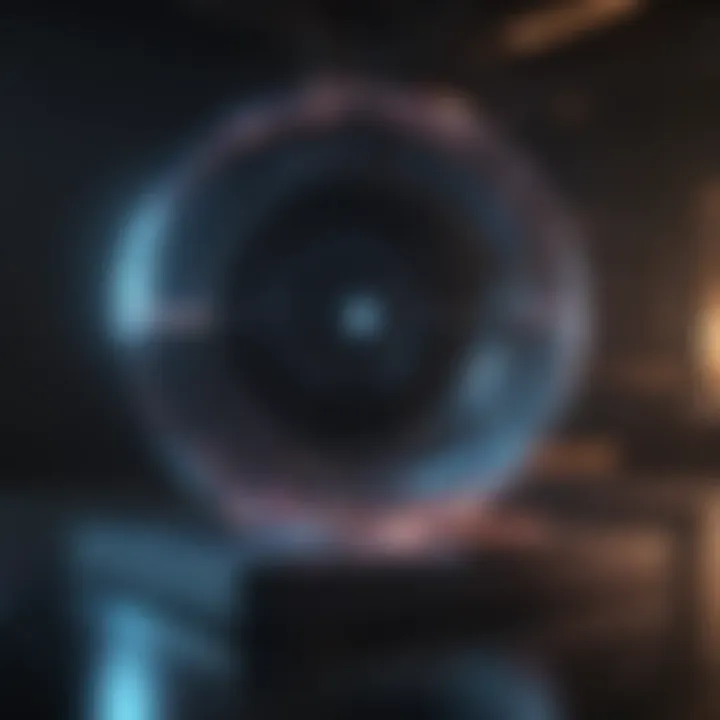
- Constructive Interference occurs when waves align, amplifying the light and creating a brighter image.
- On the flip side, Destructive Interference happens when waves cancel each other out, leading to darker areas in the hologram.
In simpler terms, think of light waves as musical notes. When they play together in harmony, you get a beautiful melody (constructive); when they clash, they create dissonance (destructive). This interplay is what brings holography to life, making it essential for anyone delving into this field. The more you understand about these principles, the better you can manipulate them in your holographic works.
Recording and Reconstructing Holograms
Recording holograms isn’t as simple as pushing a button on your camera. It requires meticulous technique and a precise understanding of how light interacts. A typical hologram is created by shooting laser light onto an object, which then reflects that light onto a recording medium, often photographic film or a digital sensor.
- Firstly, the object reflects the laser light, which gets mixed with a reference beam from the same laser.
- The interaction between these two beams results in an interference pattern that is captured by the recording medium.
- When you shine light on this exposed medium, it reconstructs the light beam that was originally reflected from the object, giving rise to a three-dimensional image.
This dual process of recording the light and then reconstructing it makes holography unique compared to standard photography. It’s this 3D depth that sets holograms apart, making them so captivating and engaging for viewers. The technical intricacies of this process shouldn’t scare you off; rather, they should spark your curiosity and ignite your creative potential.
The Role of Lasers in Holography
Lasers are fundamental to the entire realm of holography. In fact, without lasers, the art and science of creating holograms would not exist as we know it today. The distinctive qualities of laser light — coherence, monochromaticity, and directionality — set it apart from ordinary light sources.
- Coherence means that all the light waves are uniform, allowing for the precise interference needed to create clear holograms.
- Monochromaticity refers to the fact that lasers emit light of a single wavelength, preventing color distortions in the holographed image.
- Directionality ensures that lasers emit light in a tight beam, which allows for greater control during the recording process.
Each of these characteristics contributes to producing sharp, intricate holographic images. To put it simply, a laser is like a master craftsman in the art of holography, sculpting flawless three-dimensional images with its finely tuned light. Without this critical tool, your quest to create impressive hologram videos would be almost impossible. Understanding the vital role of lasers equips you with the knowledge to choose the right tools and techniques, ultimately leading to better outcomes in your holographic projects.
"In the world of holography, the light is both the canvas and the brush — you must learn how to wield it to create breathtaking images."
Overall, these foundational concepts in holography equip you with essential knowledge, making it possible to navigate the complexities of creating your holograms effectively. The more adept you become at these principles, the more creative freedom you'll find in your work.
Equipment Needed for Hologram Video Creation
Creating hologram videos is no small feat, and having the right equipment is a make-or-break factor in the quality of your output. Whether you are a student, researcher, educator, or a professional in the field, understanding the essential tools can greatly enhance your creativity and efficiency.
Investing in top-notch equipment not only simplifies the creative process but also elevates the overall production value. From capturing high-quality footage to ensuring consistent light conditions, each piece of gear plays a pivotal role. Let’s break down the three crucial categories of equipment you'll need.
Cameras and Optical Devices
When it comes to the heart of the hologram creation process, the camera is your most vital ally. Standard video cameras or digital single-lens reflex (DSLR) cameras just won’t cut it. For holography, you need equipment capable of capturing images with high resolution and fidelity to detail. Many professionals gravitate towards mirrorless cameras for their compact design and superior video quality.
It's also crucial to consider lenses, as they can influence how light enters your camera. A wider aperture will enhance low-light performance, vital when dealing with intricate holograms that rely on various lighting conditions.
Some additional components to consider in your optical setup include:
- Tripods for stability, especially during prolonged shoots.
- Filters that can manipulate light, such as polarizers.
- Microscopes for extreme close-ups when capturing minute details.
"The right camera and lens combination can turn a good holograph into an astonishing one. Always test different setups to find what works best for your project."
Lighting Requirements
Lighting is more than just a necessary condition for filming; it’s an art form that shapes the narrative of your hologram video. Natural light can often be unpredictable, so a controlled lighting setup is usually favored.
Using a combination of LED lights and softboxes allows you to mold the intensity and softness of the light, which is essential for creating the depth and shadowing needed in holography. Here are a few aspects to keep in mind regarding lighting:
- Color Temperature: Aim for a consistent color temperature to ensure your images do not possess undesirable hues.
- Lighting Angles: Experiment with different angles to create unique effects that enhance the 3D illusion of your hologram.
- Avoid Glares: Use diffusers to minimize glare, making sure the hologram stays clear and visible.
Stabilization Equipment
When filming holographic content, any movement can lead to distorted images, which can ruin your entire project. Hence, stabilization equipment is paramount. Gimbals and steadicams are designed to combat unwanted shaking, ensuring that your footage comes out steady.
In addition to that, consider using:
- Tripods that can lock in securely to maintain focus while filming.
- Dollies or tracks that provide smoother pans and movements, particularly useful in dynamic shots.
- Vibration dampers if you’re shooting in environments prone to shocks or movements.
Securing the right equipment for your holographic video projects isn't merely about functionality—it's also about enhancing your creative potential. With the correct cameras, lighting, and stabilization gear, you set yourself up for success in crafting holograms that are not only visually stunning but also rich in detail and clarity.
Software for Creating Hologram Videos
In the realm of crafting hologram videos, the right software acts as the backbone of the creative process. It facilitates everything from initial concept to the final refined product. Ensuring that you have the proper tools not only enhances the video’s quality but also streamlines your workflow, making the often complex process of holography a bit friendlier to navigate. With advancements in technology, a whole suite of software options are available, catering to various aspects of video production, from editing to 3D modeling.
Video Editing Software Overview
When it comes to spatting together footage for holographic presentation, video editing software is crucial. Programs such as Adobe Premiere Pro and Final Cut Pro are two heavy hitters in this space. They allow creators to trim clips, adjust sound, and incorporate transitions effortlessly. But using a softer approach, more user-friendly options like Camtasia or Filmora can be just as effective for beginners.
These tools provide features that are essential for perfecting your hologram video:
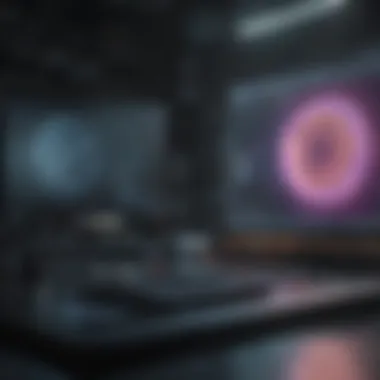
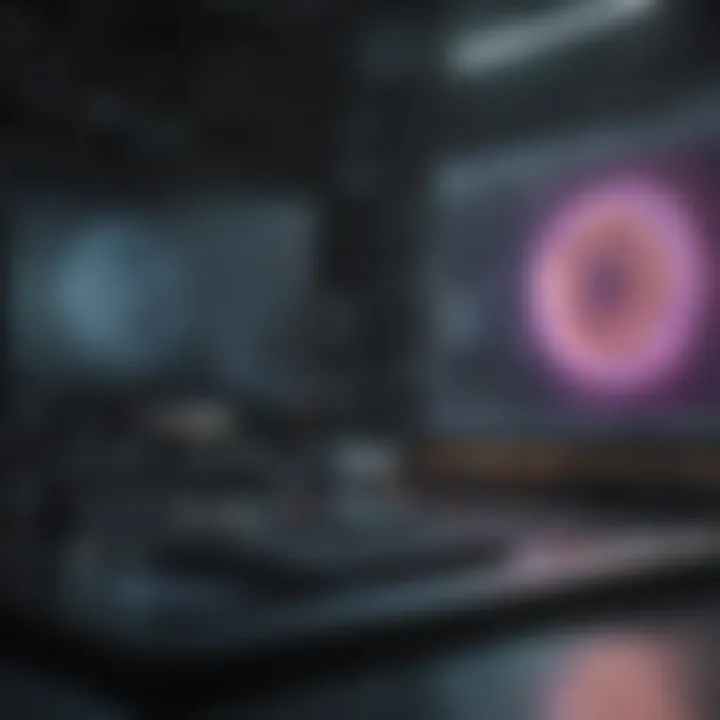
- Multi-track editing: Essential for combining multiple video layers, which is key in holographic displays where depth cues need clarity.
- Color correction: Setting the right mood or ambiance is pivotal, and proper color grading can make a hologram pop.
- Special effects: Some software comes with built-in effects that can add a unique flair to the visualization.
It's important to choose software that aligns not just with your technical skill but also with the specific needs of your holographic project. As captured footage might be derived from multiple sources, having a flexible platform will ease the integration into a cohesive whole.
3D Modeling Applications
The creation of holograms usually incorporates various three-dimensional elements. Software dedicated to 3D modeling is invaluable at this stage. Essentially, tools like Blender and Autodesk Maya enable you to sculpt complex models. Blender, particularly, is renowned for its open-source nature and undergirding community support, making it a popular choice for those diving into 3D.
Through precise modeling, you can influence the holographic illusion significantly. This may include:
- Model Rigging: It allows for animation; this is especially key for video games or educational visuals.
- Texturing and Materials: How light interacts with your models is crucial, and great texture work can lift a hologram from mundane to magnificent.
- Animation Principles: Ensuring that your 3D objects behave naturally while in motion can bring them to life.
Those getting their feet wet might find online tutorials quite helpful to familiarize themselves with the vast capabilities of such programs, eventually unlocking the potential of high-quality holographic visuals.
Integration of Augmented Reality Tools
As holograms start to dabble with augmented reality (AR), leveraging AR tools becomes a natural progression. Programs like Unity or Unreal Engine provide comprehensive frameworks that allow developers to create interactive hologram experiences that also harmonize with real-world environments.
With the integration of AR tools, the following features become accessible:
- Real-time Rendering: This is key for ensuring smooth interactions with viewers, enhancing immersion.
- User Interaction Capabilities: The ability to create experiences where users can manipulate the holograms adds an extra layer of engagement.
- Cross-platform Compatibility: Many tools allow for sharing and deploying your hologram across various devices, maximizing your reach.
Engaging with augmented reality through your hologram projects is akin to gaining wings; suddenly, the possibilities seem infinite. By blending realism with holographic visuals, creators have the potential to produce media that captivates and informs, advancing the overall audience experience.
In summary, the software for creating hologram videos serves as a fundamental pillar that supports the entire fabrication process. Whether through video editing, 3D modeling, or AR integration, each category of software contributes significantly to producing a finished product that resonates with viewers.
The Creative Process of Crafting Hologram Videos
Creating hologram videos revolves significantly around a well-defined creative process. This process acts as the backbone for developing content that is not only visually stunning but also deeply engaging. Each step in this creative journey helps to refine ideas, ensuring that the final product resonates with the audience.
Understanding the creative process is also about appreciating how ideas transform into visual content. Here’s a closer look at the various components involved in crafting hologram videos, from conception to execution.
Concept Development
The first step in crafting hologram videos is concept development. This phase is crucial as it lays the foundation for the entire project. The central idea must be clear and compelling; this could range from a storyline to a visual theme. The goal here is to identify the purpose behind the video.
- Identify key messages: What do you want the audience to remember?
- Brainstorming sessions: Getting your creative juices flowing is vital. Involve team members to stimulate a variety of ideas.
- Research: Analyze existing holographic videos to discern what works and what doesn't.
Taking time to solidify your concept means you’re less likely to hit roadblocks later. A strong concept can guide decisions in storyboarding and filming, ensuring that you remain on track.
Storyboarding Techniques
Next comes storyboarding techniques, a critical step that translates your concept into a visual narrative. This phase allows creators to map out their ideas frame by frame and visualize how the holograms will interact with the audience. A storyboard acts like a blueprint for your video.
- Visual Representation: Sketch out key scenes, indicating how the holographic effects will play out in each segment.
- Sequential Flow: Organize your storyboard in a manner that narrates the story logically.
- Feedback Loop: Share your storyboard with peers to get constructive input. This can help identify potential flaws before you start filming.
A well-structured storyboard not only saves time during the shooting phase but also enhances the final product's coherence and flow.
Filming Best Practices
Finally, we come to filming best practices, which play a vital role in harnessing the full potential of holography. Whether you’re shooting against a green screen or in an elaborate set, certain practices can elevate your footage significantly.
- Stability is Key: Ensure your camera setup is stable to avoid shaky footage, which can distract from the holographic effects. Use tripods or stabilization equipment wherever possible.
- Lighting Considerations: Proper lighting is crucial. Too little or too much can ruin the holographic illusion. Soft, even lighting typically works best, reducing harsh shadows that can detract from the hologram’s clarity.
- Experiment with Angles: Don’t be afraid to try different camera angles. Various perspectives can dramatically impact how the holograms appear in the final video.
When filming, staying adaptable and open to creative experimentation can yield unexpected yet rewarding results.
"Creativity involves breaking out of established patterns in order to look at things in a different way."
Post-Production Techniques for Hologram Videos
The process of creating hologram videos doesn't stop once filming wraps up. In fact, a lot hinges on what happens in the post-production phase. This is where the raw footage is transformed into a polished, coherent final product that communicates your intended message effectively. Several elements are vital in this stage of production, including editing, effects, and rendering. These components not only enhance the visual appeal but also ensure the overall video functions as intended.
Editing and Refining Footage
Editing is the backbone of post-production. It's where the director's vision begins to take shape, often through cutting unnecessary scenes and refining the sequence of shots. Having clear objectives during this stage is imperative. For example, one must consider what story or emotion are they trying to convey. This can be achieved through pacing, transitions, and shot selection. Good editing tightens the narrative, guiding the viewer seamlessly from one moment to the next.
When it comes to hologram videos, attention to detail becomes even more critical. Patching up inconsistencies between shots can be a painstaking task, but it's worth every ounce of effort. Tools like Adobe Premiere Pro or Final Cut Pro provide an extensive suite of options for fine-tuning footage. For instance, adjusting contrast and color balance can dramatically affect how holograms are perceived by the audience. It's all about crafting an immersive experience that captivates the viewer.
Adding Effects and Enhancements

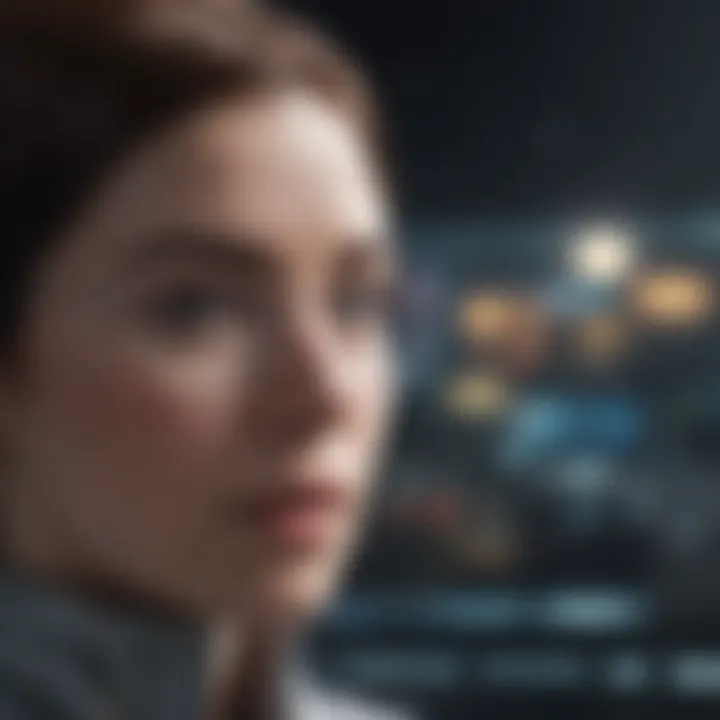
Effects can elevate a hologram video from average to extraordinary. From subtle changes like fade-ins and transitions to more elaborate visual effects, the right enhancements can significantly impact viewer engagement. For example, layering graphic elements onto holograms can add depth and sophistication to the visuals, making them feel more lifelike.
Beyond mere aesthetics, effects can play a functional role. Think of them as a bridge between reality and the holographic elements you’re portraying. Tracking objects or incorporating motion graphics can help reinforce the narrative, guiding the viewer through the information you want to convey. After all, it’s not just about looking good; it’s also about making sure your audience understands the material.
However, a word of caution here: overdoing effects can detract from the main content of your video. "Less is more" often rings true in this context. Striking the right balance is essential to maintain viewer focus while still offering captivating visuals.
Rendering Hologram Videos
Once the footage is edited and the effects applied, the final step is rendering the hologram video. Rendering essentially compiles all your edits into a single file format. This is where things can go a bit haywire if not handled carefully. Many factors come into play during this stage, like resolution and output format.
Choosing the correct settings is critical, especially considering the platforms where the video will be displayed. For instance, a higher resolution might be needed for large display screens, whereas social media platforms might require more compressed versions. Some common formats include MP4 or MOV for general use, but experimenting with 3D specific formats like .hologram or .mp4 hologram files may yield interesting results.
Additionally, rendering can be time-consuming, depending on the complexity of your final project. It’s always a good practice to monitor the progress and make sure everything looks good before finalizing everything.
"In the realm of holograms, how you present your work can often elevate the piece itself. Understanding post-production ins and outs makes all the difference."
To sum up, post-production techniques are the linchpin in the creation of captivating hologram videos. They stand between a rough concept and a finished piece that resonates with audiences, enhancing not just the visuals but the overall narrative. Achieving mastery in this stage will elevate one's ability to produce professional-grade hologram videos that not only impress but also educate.
Challenges in Hologram Video Creation
Creating hologram videos is an exciting journey, but it doesn't come without hurdles. Understanding these challenges can provide valuable insight for aspiring creators. The landscape of holography, while evolving, is still rife with specific difficulties and considerations. Addressing these elements not only prepares creators for the path ahead but also enhances their ability to deliver high-quality, mesmerizing holographic content. Below, we explore three of the most significant challenges in this arena: technical difficulties, cost implications, and skill acquisition.
Technical Difficulties
One of the most daunting aspects of hologram video production is the technical difficulties that arise during the process. The precision of capturing and reconstructing light waves is no small feat. Many creators find themselves wrestling with issues such as:
- Poor Image Quality: Often, the clarity of holograms can be affected by camera settings, lighting conditions, and the quality of the recording equipment. Even a small miscalibration can lead to unexpected artifacts in the footage.
- Inconsistent Depth Perception: Achieving the desired three-dimensional effect might not always go as planned. Factors like camera angles and subjects' distance from the camera become crucial.
- Interference Patterns: Since holography relies on light interference, any external light sources can disrupt the recording process, muddying the overall output. It’s critical to find a controlled environment, a challenge in itself.
These technicalities often necessitate numerous trials to get just right, sometimes leading to frustration. But overcoming these hurdles brings a deeper appreciation for the technology involved in holography.
Cost Implications
Next up is the cost implications associated with creating hologram videos. When you’re looking to produce high-quality holograms, the financial resources required can quickly add up. Significant expenses may include:
- High-End Equipment: Cameras that can capture high-resolution images suitable for holography can be prohibitively expensive. A specialized camera system, such as a Lytro or high-grade DSLR with appropriate lenses, can set creators back considerably.
- Lighting Setups: Depending on the environment, effective lighting can require additional investment in diffusion materials, LED panels, or softboxes to achieve the right ambiance. This is crucial, as unflattering light can make or break the holographic effect.
- Software Licensing: The software for hologram creation also comes with a price tag. Premium video editing programs or 3D modeling applications like Adobe After Effects and Blender can become a considerable portion of your budget.
For many, the initial investment may seem daunting compared to conventional videography. However, it's essential to regard these expenses as components of a long-term investment that can pay off when one produces compelling content.
Skill Acquisition
Lastly, the skill acquisition aspect cannot be ignored in the journey to create hologram videos. This type of artistry merges technology with creativity, requiring various skills:
- Technical Proficiency: Understanding the mechanics behind holography isn’t just a bonus; it's a necessity. Creators must familiarize themselves with terms like diffraction, interference, and how light behaves when captured.
- Creative Vision: It's not just about the technical side; having a solid creative vision is paramount. Creators must develop their storyboarding skills to ensure their holograms convey the intended message or emotion.
- Continuous Learning: Given that holographic technology is quickly evolving, continuous learning is vital. Keeping up with advancements, software updates, and new techniques can be a tall order. Fortunately, communities on platforms like reddit.com can provide valuable insights and support.
The struggle to master these skills often leads to rewarding outcomes. It cultivates a creator's ability to innovate and push boundaries within this fascinating field.
"The beauty of holography lies in its capacity to transcend traditional visuals and create a space where imagination can run wild."
Addressing these challenges head-on can turn the daunting process of hologram video creation into an enriching experience, paving the way for groundbreaking works in this vibrant medium.
Future Trends in Holographic Video Technology
As we peer into the future of holographic video technology, it becomes clear that we are standing on the threshold of a revolution in how we create and consume visual media. The trends emerging in this field promise to not only enhance the technical capabilities of holography but also democratize its use across different sectors. This evolution is not just tech for tech's sake; it’s about making possibilities broader and more accessible. Let’s delve into the intricacies that will shape this futuristic landscape.
Advancements in Capture Techniques
One of the most significant aspects of future holographic video technology lies in advancements in capture techniques. Typically, capturing a hologram was a labor-intensive process that involved precision optics and specialized setups. However, recent innovations are changing the game. We are seeing the integration of artificial intelligence in image processing, which lets cameras swiftly analyze scenes and optimize settings for holographic capture on-the-fly. With such technology, the need for a deep understanding of complex optics is reduced, putting powerful tools into the hands of everyday creators.
Consider the potential of using drones equipped with advanced sensors to create 360-degree holographic captures effortlessly. The combination of AI and enhanced hardware means that creators can focus more on storytelling and less on the technical nuisances of holography. This opens the door for independent artists and content creators, allowing them to produce high-quality holograms without breaking the bank.
Greater Accessibility for Creators
Alongside advancements in capture techniques, we’re witnessing a drive towards greater accessibility in holography. The barrier to entry has historically been the high cost of equipment and the steep learning curve associated with the software. Thankfully, a shift is occurring. As more companies invest in user-friendly products and open-source software solutions, things are changing for the better.
Imagine a scenario where a filmmaker can create 3D scenes with just a smartphone and a few affordable accessories. Today, various apps aim to bring holography into the palms of creators. Platforms like Reddit often feature discussions about the latest tools and resources, making it easier to find helpful information. Moreover, this shift will likely lead to an increase in educational resources, creating courses that demystify the process and encourage experimentation.
Potential for Real-Time Holography
One of the most exhilarating prospective developments in holographic video technology is the potential for real-time holography. This would revolutionize live events and experiences—think of an artist performing live, their hologram generated and transmitted in real-time to audiences scattered across different locations. The tech giants seem to recognize this potential, as companies are vying for breakthroughs in bandwidth and latency issues that currently plague video streaming.
"Imagine locales where virtual representations of companies or individuals can engage audiences, creating an immersive experience without the need for travel."
Moreover, with greater integration of augmented reality, these holographic experiences could blend seamlessly with our surroundings. Envisaging reception rooms that display customer avatars or education platforms enabling immersive classrooms could become a reality, all hinging on real-time holography.
As these trends unfold, they underscore an important notion: holography is evolving from a niche technology into a widespread medium. The advancements on the horizon are not merely enhancements; they present a paradigm shift that will redefine how we think about interaction, storytelling, and creativity in the years to come.



